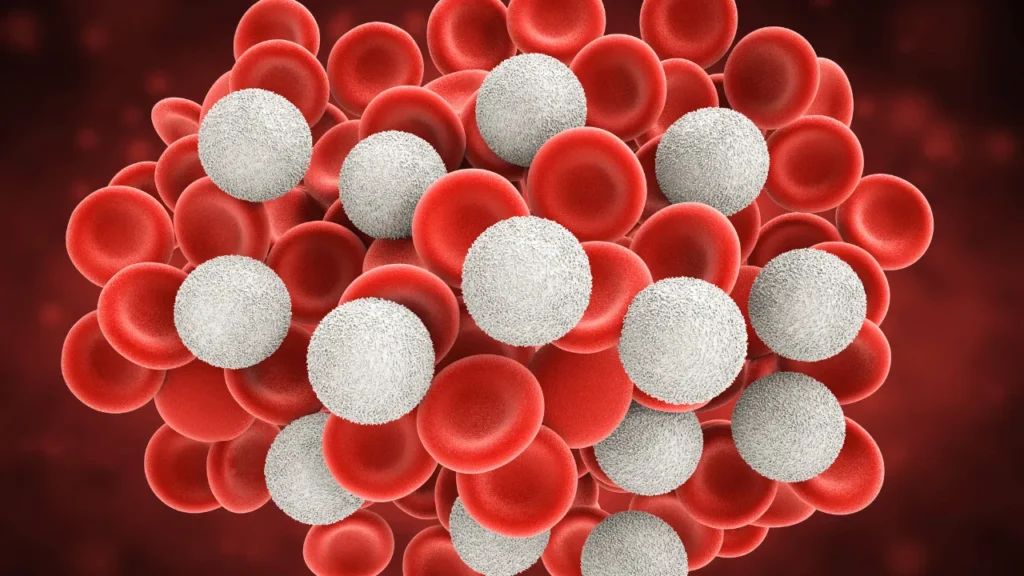Vitamin A, a fat-soluble vitamin, plays a crucial role in maintaining various bodily functions, including vision, immune system performance, and cellular communication. As an essential micronutrient, it is involved in the biochemical processes of the body and brain, affecting everything from alertness and focus to cognition. This article delves into the nature of Vitamin A, its health benefits, optimal dosages, side effects, potential substance interactions, and responsible use, especially for individuals interested in nootropic supplements to enhance cognitive functions.
You May Also Like:
Tarragon: Benefits, Dosage, Side Effects, Drug Interactions, And Other Important Information
Vitamin A: Benefits, Dosage, Side Effects, Drug Interactions, and Other Important Information is an original (NootropicsPlanet) article.
Nature of Vitamin A
Vitamin A refers to a group of compounds that includes retinol, retinal, retinoic acid, and provitamin A carotenoids, such as beta-carotene. These compounds are essential for growth and development, maintenance of the immune system, and good vision. Retinol and retinoic acid are crucial for gene transcription, while beta-carotene, a precursor to Vitamin A found in plant foods, acts as an antioxidant, protecting the body from free radicals.
Health Benefits of Vitamin A
The benefits of Vitamin A are diverse and significant. It is pivotal for maintaining healthy vision, particularly in low light conditions, as it is a component of rhodopsin, a protein in the eyes that allows vision in low light. Beyond vision, Vitamin A is vital for immune function. It enhances the body’s defenses against illness and infection by supporting the production and function of white blood cells. Moreover, it plays a role in skin health and cell growth, making it crucial for wound healing and the maintenance of healthy skin and mucous membranes.
Vitamin A also impacts cognition and neurological function. Adequate levels of this vitamin support brain health by maintaining the integrity and function of brain cells. It has been implicated in learning processes and memory, partly due to its role in synaptic plasticity, the ability of synapses to strengthen or weaken over time, which is central to learning and memory.

Chemistry of Vitamin A
Vitamin A encompasses a group of organic compounds, including retinol, retinal, retinoic acid, and provitamin A carotenoids like beta-carotene. These compounds share a fundamental structure, characterized by a cyclic ring attached to a polyene chain, which concludes with a polar functional group. This structure is essential for the vitamin’s ability to interact with various biological molecules and membranes.
Retinol, the alcohol form, serves as a storage form of the vitamin in the liver and is converted to retinal, the aldehyde form, in tissues where it’s needed. Retinal is crucial for vision, participating in the visual cycle. Retinoic acid, the acid form of Vitamin A, is not found in the diet but is produced from retinal in the body. It is highly active in gene expression regulation and cellular differentiation processes.
Beta-carotene and other provitamin A carotenoids are plant pigments that can be converted into retinol in the body. These carotenoids have antioxidant properties, protecting the body against oxidative stress by neutralizing free radicals.
Physiological Mechanism of Action
Vision
In vision, the retinal plays a critical role in the visual cycle. It combines with the protein opsin to form rhodopsin in rod cells of the retina. Upon absorbing light, retinal changes from a cis to a trans configuration, leading to a change in rhodopsin’s shape and triggering a series of biochemical reactions that create a nerve impulse. This impulse is transmitted to the brain, resulting in vision. Vitamin A’s role in the regeneration of rhodopsin is essential for sustained vision, especially in low-light conditions.
Gene Expression and Cellular Differentiation
Retinoic acid, a metabolite of Vitamin A, is crucial for gene expression and cellular differentiation. It binds to nuclear receptors (RARs and RXRs), which are transcription factors that regulate the expression of genes involved in cell differentiation, growth, and embryonic development. By influencing gene expression, retinoic acid plays a significant role in the development and maintenance of organs, including the brain, and in processes like synaptic plasticity, which is essential for learning and memory.
Immune Function
Vitamin A modulates immune function by supporting the production and function of white blood cells, which protect the body against infections and diseases. It enhances the immune system’s ability to combat pathogens while maintaining the integrity of mucosal surfaces (such as the lining of the respiratory, gastrointestinal, and urinary tracts) as a first line of defense against infection.
Antioxidant Properties
Beta-carotene and other carotenoids’ antioxidant properties contribute to Vitamin A’s physiological effects. By scavenging free radicals, these antioxidants protect cellular components from oxidative damage, which is crucial for maintaining neuronal health and function. Oxidative stress is implicated in various neurodegenerative diseases and aging processes, making antioxidants important for brain health and cognitive function.
Impact on Cognitive Function
The mechanisms by which Vitamin A affects cognitive function are multifaceted. Through its role in gene expression, Vitamin A influences the brain’s development and function. Retinoic acid, for example, regulates genes involved in synaptic plasticity, the process by which synaptic connections strengthen or weaken over time, a foundational mechanism for learning and memory. Additionally, Vitamin A’s antioxidant properties may protect neural tissue from oxidative stress, contributing to the maintenance of cognitive functions.

Optimal Dosage of Vitamin A
The optimal dosage of Vitamin A varies by age, gender, and life stage. The Recommended Dietary Allowance (RDA) for adult men is 900 micrograms (mcg) of retinol activity equivalents (RAE) per day, and for adult women, it is 700 mcg RAE per day. For pregnant and lactating women, the needs are higher due to the demands of supporting a developing fetus and infant.
However, when considering Vitamin A for its nootropic benefits, such as enhancing alertness, focus, and cognition, it is crucial to approach supplementation with caution. The body stores excess amounts of this fat-soluble vitamin, leading to potential toxicity if consumed in excessive amounts.
Side Effects of Vitamin A
While Vitamin A is essential for health, excessive intake can lead to hypervitaminosis A, a condition characterized by nausea, headache, fatigue, and even liver damage or neurological symptoms in severe cases. The tolerable upper intake level (UL) for adults is set at 3000 mcg RAE per day to prevent the risk of toxicity. Symptoms of toxicity can also include vision disturbances, bone pain, and skin changes.
Potential Substance Interactions with Vitamin A
Vitamin A can interact with certain substances, including other supplements and medications. For example, the concurrent use of isotretinoin, a medication derived from Vitamin A used to treat severe acne, can increase the risk of vitamin A toxicity. Additionally, certain weight-loss drugs that reduce the absorption of fat can also decrease the absorption of vitamin A, potentially leading to deficiency. Therefore, it’s essential to consult with a healthcare provider before starting any new supplement, particularly if you are taking medications or other supplements.

Responsible Use of Vitamin A for Nootropic Benefits
For those interested in the nootropic benefits of Vitamin A, such as enhanced alertness, focus, and cognition, it’s crucial to ensure adequate but not excessive intake. Given the potential for toxicity, adhering to the RDA and not exceeding the UL is important. Incorporating foods rich in Vitamin A and beta-carotene, such as leafy green vegetables, orange and yellow vegetables, and fish, can help achieve optimal levels without the risk associated with high-dose supplements.
Vitamin A:
Conclusion
Vitamin A is an essential nutrient that plays a variety of roles in immune system function, cognitive health, and vision maintenance. People must take it according to the suggested amounts in order to get the benefits without running the danger of toxicity, particularly when investigating its nootropic properties.
A healthcare provider’s advice is essential before starting any supplements because of the possibility of negative effects and drug interactions. In the end, vitamin A-rich, well-balanced diets can promote the best possible health results, highlighting the significance of dietary knowledge and prudent supplementing techniques.

References:
- β-Carotene and Other Carotenoids. Retrieved from: https://www.ncbi.nlm.nih.gov/books/NBK225469/
- Vitamin A. Retrieved from: https://www.ncbi.nlm.nih.gov/books/NBK222318/#:~:text=The%20Recommended%20Dietary%20Allowance%20(RDA,day%20of%20preformed%20vitamin%20A.
- Hypervitaminosis A. Retrieved from: https://www.mountsinai.org/health-library/diseases-conditions/hypervitaminosis-a#:~:text=Hypervitaminosis%20A%20is%20a%20disorder,some%20enriched%20or%20fortified%20foods.
Important Note: The information contained in this article is for general informational purposes only, and should not be construed as health or medical advice, nor is it intended to diagnose, prevent, treat, or cure any disease or health condition. Before embarking on any diet, fitness regimen, or program of nutritional supplementation, it is advisable to consult your healthcare professional in order to determine its safety and probable efficacy in terms of your individual state of health.
Regarding Nutritional Supplements Or Other Non-Prescription Health Products: If any nutritional supplements or other non-prescription health products are mentioned in the foregoing article, any claims or statements made about them have not been evaluated by the U.S. Food and Drug Administration, and such nutritional supplements or other health products are not intended to diagnose, treat, cure, or prevent any disease.


